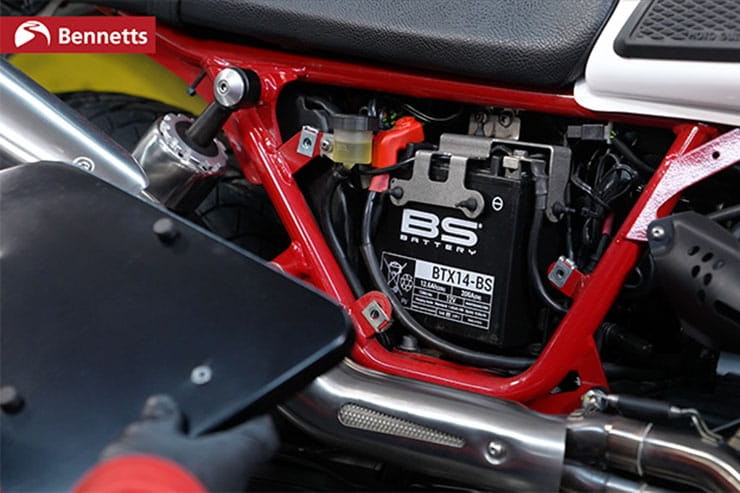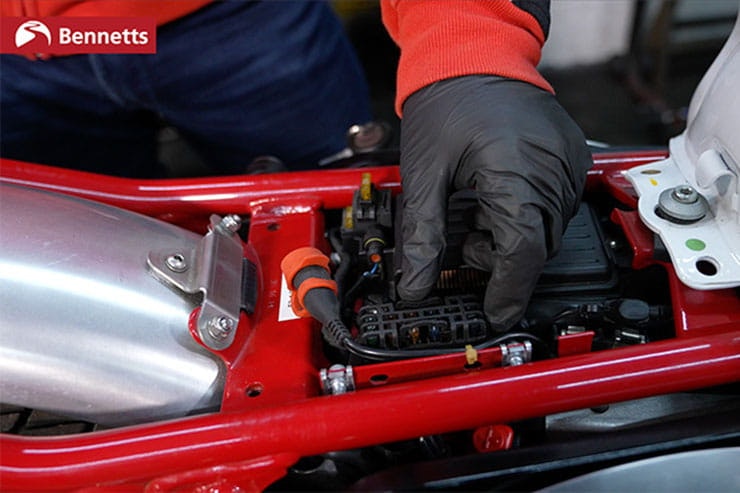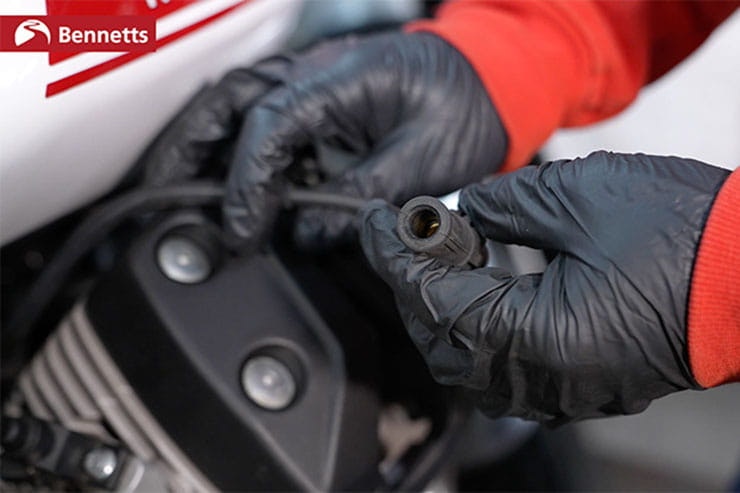Why won’t my motorbike start?
BikeSocial Road Tester
03.03.2021
Top tips if your bike won’t start
If it’s been a while since you last started your bike then take a look at this batch of tips to help if it won’t go.
Ideally, during winter you will have had a trickle charger connected to your bike’s battery to keep it topped up and healthy; you will have started your bike’s engine on regular basis; brimmed your tank with petrol, overinflated your tyres, raised the wheels off the cold garage floor or parked it on some carpet. Obviously, you will have deep-cleaned it to a professional standard, and spun the wheels every few weeks, too.
You didn’t? Ah, well you’re not alone, but we might have a problem when we come to start it after a long winter layoff, one made even longer for many of us due to COVID-19 and lockdowns.
So, let's look at the problems you may have, and how to overcome them. (Please bear in mind this is a generic guide and bikes differ greatly.)
Before the start-up – The first, and sometimes forgotten, job: open the garage door and windows or, preferably, roll the bike outside onto your drive or into the garden. The start-up procedure will depend on how long your bike has been stood, and this may mean we have some smoke, and we may need to run the bike for a long period to bring everything up to temperature.
Obviously, carbon monoxide (gasses from the exhaust) can be dangerous and, equally, we don’t want to fill the shed full of two-stroke smoke, therefore make sure wherever you are it is well ventilated.
Suck, squeeze, bang, blow – Before you press the starter button, think about what your engine needs. Think: suck, squeeze, bang and blow. Your engine needs to be able to breathe air, and then get rid of it (exhaust). Is the airbox clear? Is the exhaust clear? Or has a mouse made a nest in the airbox? (You may laugh but I’ve opened an airbox to find a fully-functional home for rodents.) Have the kids slid toy cars down the exhaust? (Same…). The point is, you don’t want to turn over the engine and suck in debris, so checking is vital.
Now to start – Turn on the ignition, flick on the manual choke if fitted, and press the starter button. Allow the starter motor to turn the engine for around five seconds… and it should start. If this doesn’t happen, try again, but only two to three times – don’t leave your thumb on the button, otherwise you can ruin the starter motor.
Once running, simply allow the engine temperature to rise naturally as the bike ticks over. Don’t rev it, it has only just woken up after a deep sleep. As the temperature rises, listen for misfires and take the opportunity to check things such as lights, indicators and horn – simulate an MoT, if you like. Moisture has a habit of creeping into electrical components.
I’d recommend letting the engine warm-up until the thermostat activates the fan for the radiator. If you have an air-cooled bike let it run until you can feel the warmth from the engine.
If the above doesn’t happen, obviously we have a problem – let’s look at the possibilities, and how we rectify them.
Dead battery? – The starter motor is essentially an electronic kickstarter. If it’s not turning over then the battery is usually dead. Do the lights come on with the ignition, does the horn work? Check to see if the battery is connected correctly. Did you remove it before storage and not re-install it correctly?
Almost-dead battery – If the starter motor is only turning slowly this is usually a battery problem, too. We can jump-start the engine with jump leads, bump start it (depending on the bike), or charge the battery if there’s time. If the battery is dead, it might not take a charge and will need replacing. Most garages will be able to check your battery if you don’t know how.
Are we being stupid? – The starter motor is turning, but the engine’s not firing – are we being stupid? Don’t forget, most modern bikes will not start unless the clutch is in, or the side stand up (and don’t feel insulted or patronised, we all forget this all the time, especially after a layoff). Is it in gear, is the kill-switch stuck? Double-check everything and refer to your manual if you are unclear.
Fuses – If we have a good battery and the correct start procedure (see point 3) but no engine life, we might have a fuse problem: broken, burnt out, not fitted or corroded. Make sure the bike’s ignition is switched off and give them a visual check (the fuse boxes are usually located under the seat). Again, refer to the owner’s manual for guidance.
Do we have petrol? The starter motor is turning strongly, and we have established that we are not stupid, but still no engine start-up… Do we have petrol? Does the bike have a fuel tap? How old is the petrol? After six months petrol can degrade and go off. If we are on an older bike with a choke, have we added too much petrol and flooded the combustion chamber? On a modern fuel-injected bike, petrol less than six months-old shouldn’t be a problem. But an older bike with carburettors and ‘stale’ petrol may require a tank drain or, worse, a carb clean.
Bright Spark – If we have checked all the above – we have a strong battery, no fuses are blown or corroded, petrol is plentiful and fresh, the air intake system and exhaust system are clear, and we have the correct start-up procedure – then we need to look at the spark. Remember suck, squeeze, bang, blow? Now we are looking at bang.
Getting to the spark plugs on some bikes is amazingly easy, whereas on others it can be a nightmare. Air-cooled bikes and singles are usually simple enough, while sportsbikes, especially V4s and V-twins, will require some mechanical knowledge and patience. Once we have managed to remove a plug we need to check the spark. Before doing that, give a visual check of the plug and its HT lead and connectors. Does the plug look in good condition? Is the HT lead and cap free of corrosion?
Once we are happy, we can check the spark by turning over the engine, with the plug on a metal surface. Please don’t hold on to the spark plug whilst doing this, and have the base of the plug on a metal object on the bike, but nowhere near the fuel tank as you are creating a spark. Once we are happy with the first spark, replace and check each spark plug in turn (assuming you have a multi-cylinder bike).
Take a break – If you have done all the above, your bike should fire up. However, when we are working on our own bikes, we often get impatient because we just want to ride. This happens to me all the time. When we rush or get frustrated we make mistakes and get an electric shock from the plug – yes, I’ve done that too. So have a brew and think about the procedures we have laid out here – nine times out of ten you’ll get it fired back into life.
And, of course, it can take two hours just to access and remove the battery on some bikes, and half-day just to remove the plugs, so don’t try to start your bike for the first time on the morning of your first ride of spring, or arrive in the garage fully kitted in leathers. You need to patient and allow time to run through the procedure once or twice. I’ve checked fuses, done ‘everything’ and then re-checked the fuses to find a blown one. Things are easily missed.
Admit defeat – I’ve also seen some of the most pampered bikes in the world fail to start on the grid, and I’ve seen the best mechanics unable to kickstart their paddock scooter into life. It is okay to admit defeat. We’ve only touched on the basics of what to check; we haven’t looked at compression, ECU, electrics (in-depth), fuel pumps or breather pipes, to name just a few. And bikes are completely different, with some nowadays being incredibly difficult to work on, whilst others are a doddle. But the above should give you a guide, and some pub/café ammo the next time your mates are discussing why their bike won't start.
Share on social media:


